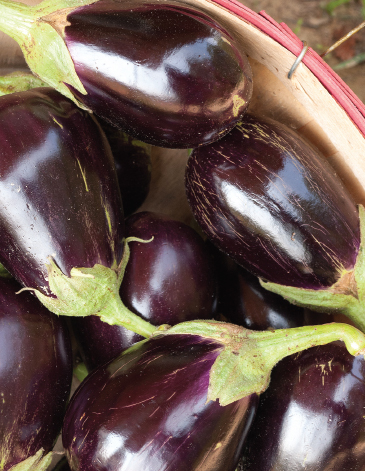With summer vegetable gardens approaching their peaks now, it is time to share some “tricks of the trade” on determining the best time to pick various veggies.
These pointers can also be helpful to people who don’t have gardens but like to go to pick-your-own farms. Frequenters to farmers markets will probably also find a few tips to “harvest” produce at its freshest.
Bell Peppers. The typical bell pepper can be picked when it is either green or red. A red bell pepper is just riper than a green one and usually tastes slightly sweeter. Harvest these peppers when they are about 2 to 3 inches in diameter.
Carrots. Carrots are normally ready when their orange crowns poke out above the soil line. For better storage, cut off all but about 2 inches of the fern tops after you pick them.
Cucumbers. Although they can come in all sizes, a standard cuke will turn a deep green when it is mature. If a cucumber starts to exhibit a yellow tint, it is past ripe.
Eggplant. A typical variety, such as ‘Black Beauty’ or ‘Classic’, should be shiny, dark purple in color and about 4 to 5 inches in diameter. Any eggplant that has been on its plant too long will lose its shine — this also applies to the newer, fancy-colored varieties such as ‘Neon’ and ‘Ping Tung’.
Okra. The best tasting — and least slimy — okra pods are normally 2 to 3 inches long. Chef’s tip: For little or no slime, when boiling okra, leave the pods whole.
Green Beans. These beans are at their best flavor when they are about 3 to 6 inches long. At this size, the seeds haven’t started to swell yet, and the pods are tender enough to snap easily.
Summer Squash. Crook, straight-neck and zucchini squash should be picked when about 6 inches long. Round patty pan varieties are at their best when around 4 to 5 inches in diameter.
Tomatoes. Come on — everybody knows what a ripe tomato looks like! However, also consider picking a few immature fruit and then trying the recipe in the Timely Tip section for a tasty Southern summer treat.
L.A. Jackson is the former editor of Carolina Gardener Magazine. Want to ask L.A. a question about your garden? Contact him by email at: lajackson1@gmail.com.
To Do in the GARDEN August
- Strange, cobweb-like tents beginning to show up in your trees? No, they are not tent caterpillars. This time of year is when fall webworms (actually caterpillars) begin to appear. The easiest way to control them is to simply rip apart the tents to expose the webworms to an assortment of eager predators.
- To help prevent the proliferation of diseases and insects, regularly rake up the spent bloom of roses and peonies and discard them (do not compost).
- It’s time to plant bulbs. No, not spring-flowering bulbs but rather fall-blooming beauties such as colchicum, sternbergia and autumn-flowering crocus that will put on a show in the garden this year rather than next year.
- If you have an indoor aquarium with fish, you also have an all-natural source of rich fertilizer, so whenever you change part of the water in the tank, pour it around some of your favorite plants.
- Since they are in constant use now, check your garden hoses for loose connections or signs of leaking splits to help conserve community water this summer.
- Have weeds growing in cracks and crevices of a sunny patio or sidewalk? Wait until the hottest time of the day and spray the offending plants with vinegar. This kitchen chemistry works on the foliage (and quite quickly, too!), but additional applications might be necessary to completely kill the plants.
- Be friendly to your feathered friends by keeping the bird feeder filled with fresh seed. Also, be sure to wash the bird bath at least once a week.
Timely Tip
Tomatoes in your garden not ripe? Why wait? Indulge in a traditional Southern dish: Try your hand at cooking fried green tomatoes. The recipe is simple, and the results are tasty.
Thinly slice three green tomatoes and dust them lightly with flour. Dip the tomatoes in a bowl of two beaten eggs, and then dredge in either cornmeal or bread crumbs. Add a pinch of salt and freshly ground pepper to taste. Cook in a pan lightly coated with vegetable oil on medium heat (flipping once) until both sides are browned, about three minutes for each side. Serve and enjoy.







